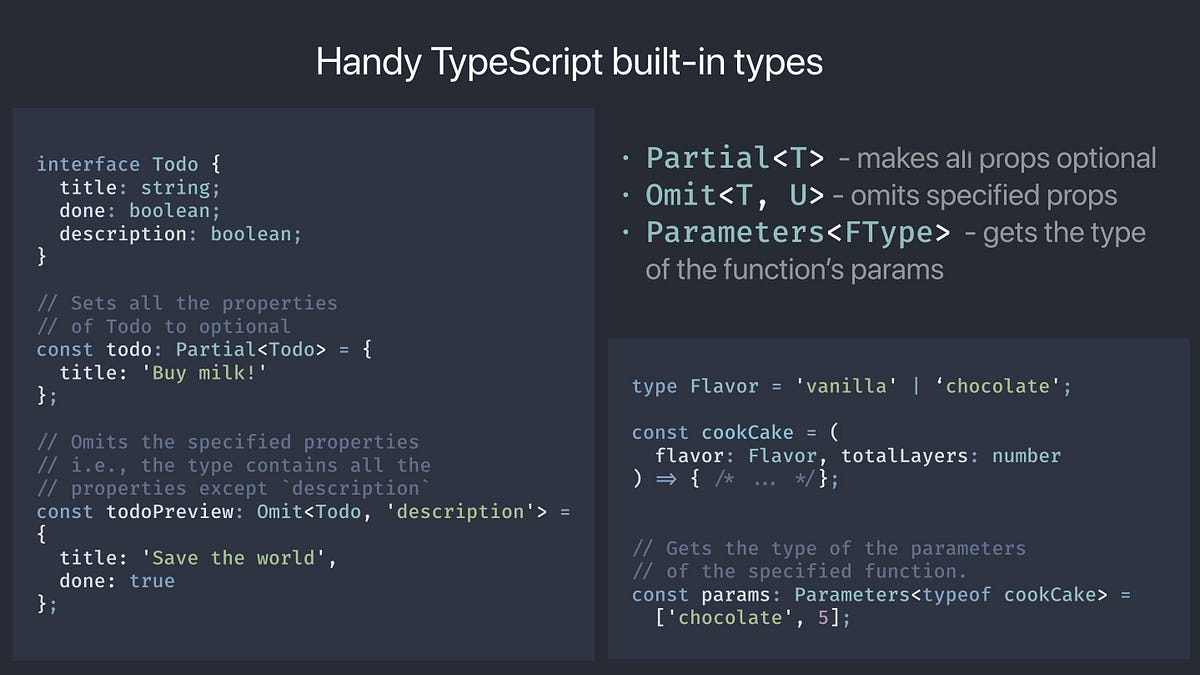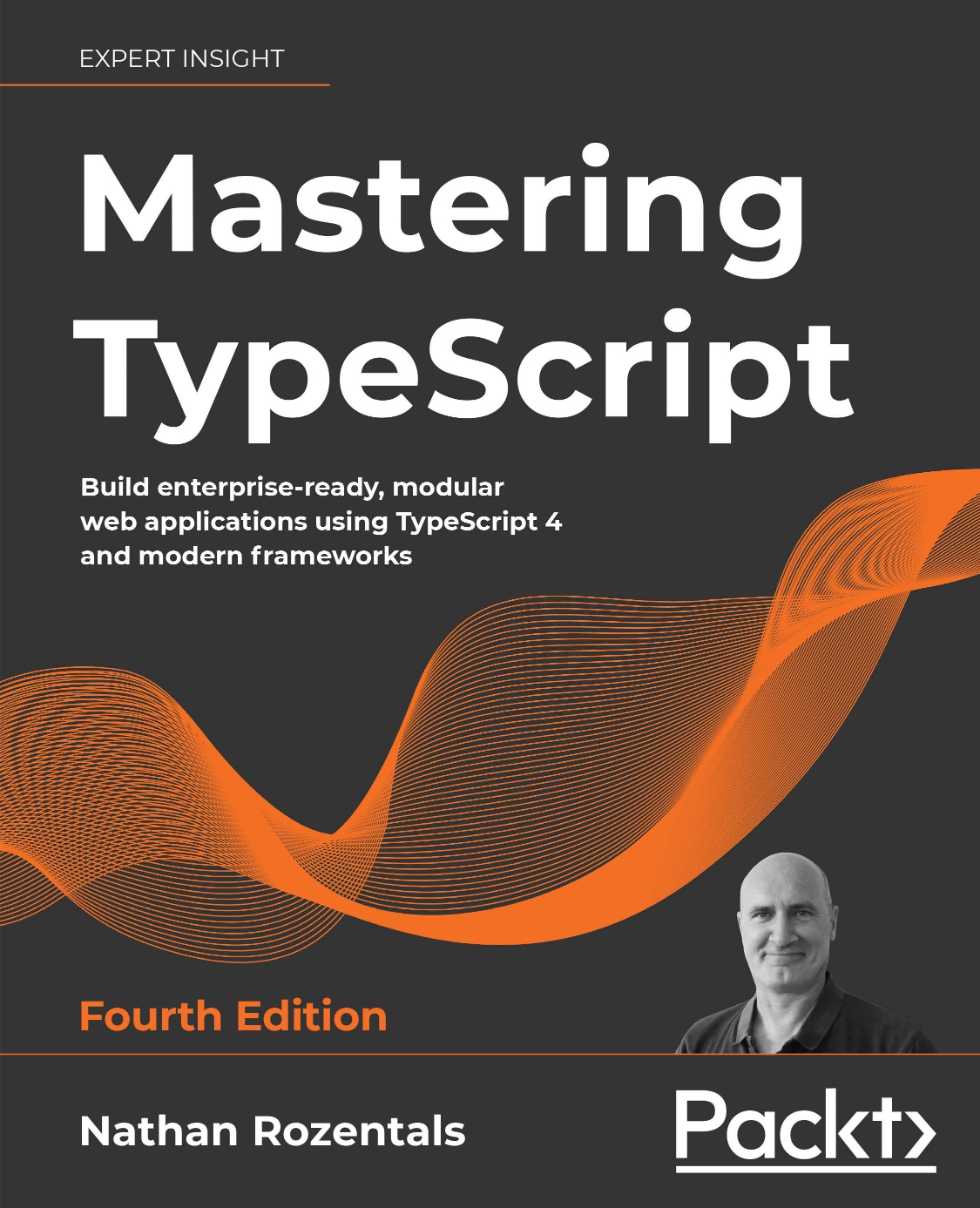Mastering TypeScript: Types, Interfaces, and Advanced Practices

TypeScript, a superset of JavaScript, enhances JavaScript by adding static typing, providing more robust type-checking and improved code maintainability. Mastering TypeScript involves understanding the fundamental concepts of types and interfaces.

Types in TypeScript:

TypeScript introduces a type system that assigns types to variables, functions, and objects. Types help identify the data type of a variable, ensuring consistency and preventing type-related errors. TypeScript supports various built-in types like string, number, boolean, and array. It also allows defining custom types using type aliases and enums.
Interfaces in TypeScript:
Interfaces define the shape of an object, outlining the properties it should have. They act as contracts between components, ensuring that the objects adhere to a certain structure. TypeScript interfaces enable type checking and enforce consistency by verifying that objects conform to the defined interface.
Advanced TypeScript Practices:
Beyond types and interfaces, TypeScript offers several advanced features for improved code organization and flexibility. These include:
- Generics: TypeScript allows creating reusable components that work with different types of data. Generics utilize type parameters, making components type-agnostic and accommodating various scenarios.
- Decorators: TypeScript decorators are functions that modify the behavior of classes, methods, or properties. They provide a way to extend the functionality of TypeScript without altering the original code.
- Asynchronous Programming: TypeScript supports asynchronous programming through the async/await syntax. This simplifies the handling of asynchronous operations, ensuring code clarity and error handling.
Mastering TypeScript involves not only understanding types and interfaces but also utilizing advanced practices to enhance code quality and maintainability. By leveraging these features, developers can write robust, reusable, and efficient TypeScript applications.## Mastering TypeScript: Types, Interfaces, and Advanced Practices
Executive Summary
This comprehensive guide explores the intricacies of TypeScript, empowering developers to harness its full potential for building robust and maintainable applications. By delving into advanced concepts such as types, interfaces, and more, we aim to elevate your TypeScript skills to the next level.
Introduction
TypeScript extends JavaScript with a powerful type system, bringing the benefits of static typing to the dynamic world of web development. Its ability to enforce types, detect errors at compile time, and support object-oriented programming principles makes TypeScript an indispensable tool for modern software engineering.
Understanding Types
Primitive Types
- Boolean: Represents true/false values.
- Number: Represents numeric values, including integers and floating-point numbers.
- String: Represents sequences of characters enclosed in single or double quotes.
Array Types
- Array: Represents an ordered collection of elements of type
T. - ReadonlyArray: Represents an immutable array of type
T.
Type Assertions
- as Type: Asserts that a value is of a specific type, allowing for safe type conversions.
- Angle-bracket casting: Similar to
as, but more concise and type-safe.
Working with Interfaces
Defining Interfaces
- Interfaces define the shape of an object, specifying its properties and methods.
- They enforce type checking, ensuring that objects conform to the defined structure.
Extending Interfaces
- interface Name extends BaseInterface: Extends an existing interface, adding additional properties or methods.
Implementing Interfaces
- Classes and objects can implement interfaces, inheriting their members and enforcing type compatibility.
Advanced Practices
Generics
- Generics allow for defining functions and classes that can operate on values of any type.
- They provide flexibility and code reusability by abstracting away the specific data types.
Decorators
- Decorators are functions that can modify the behavior of classes and their members.
- They enable meta-programming capabilities, extending the possibilities of TypeScript.
Conclusion
Mastering TypeScript’s advanced concepts unlocks a world of possibilities for software development. By leveraging types, interfaces, and advanced practices, developers can create applications that are not only robust and maintainable but also extensible and flexible. Embracing TypeScript’s strengths will empower you to build exceptional software solutions that stand the test of time.
Keyword Tags
-
typescript
-
types
-
interfaces
-
advancedtypescript
-
softwareengineering

This is a great article! I’m a beginner in Typescript, and this article has helped me to understand the basics of types, interfaces and advanced practices. I would recommend this article to anyone who is looking to learn more about Typescript.
This article is not very helpful. The examples are not clear and the explanations are confusing. I would not recommend this article to anyone who is looking to learn more about Typescript.
This article provides a good overview of the basics of Typescript. The examples are clear and the explanations are easy to understand. I would recommend this article to anyone who is looking to learn more about Typescript.
I disagree with the author’s opinion that Typescript is a better language than JavaScript. I believe that JavaScript is a more versatile language and is better suited for a wider range of applications.
I find it ironic that the author of this article is trying to teach us about Typescript when he doesn’t even know how to write proper English.
This article is so full of errors that it’s hard to take it seriously. The author should have proofread it before publishing it.
This article is a joke. The author is clearly not an expert in Typescript. I would not recommend this article to anyone.
This article is a great resource for anyone who is looking to learn more about Typescript. The author does a great job of explaining the basics of types, interfaces and advanced practices.
This article is not very helpful. The examples are not clear and the explanations are confusing. I would not recommend this article to anyone who is looking to learn more about Typescript.
This article provides a good overview of the basics of Typescript. The examples are clear and the explanations are easy to understand. I would recommend this article to anyone who is looking to learn more about Typescript.
I disagree with the author’s opinion that Typescript is a better language than JavaScript. I believe that JavaScript is a more versatile language and is better suited for a wider range of applications.